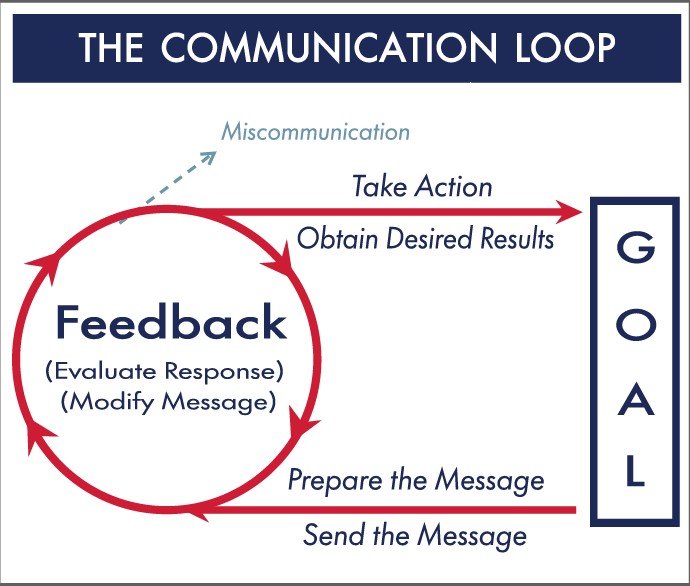Speak Like a Leader: The Ultimate Guide to Powerful Communication
There’s no secret formula to leadership—but there is a common denominator: exceptional communication. Whether you’re commanding a battlefield, running a boardroom, coaching a team, or navigating tough family dynamics, the most effective leaders know how to express themselves in a way that builds trust, motivates others, and drives results.
Want to level up your leadership? Mastering the art of communication is non-negotiable.
The Power of Two-Way Communication
Too many people think communication is about talking. In reality, it’s about connection. The best communicators don’t just broadcast messages—they make sure those messages land, resonate, and drive the desired outcome.
Here’s how to communicate like a leader—through preparation, impactful delivery, and adaptive follow-through.
1. Prepare with Purpose
Great communication starts before you say a single word.
Example:
Before a high-stakes presentation, Apple’s Steve Jobs was known to rehearse for days. He’d anticipate questions, fine-tune his messaging, and work through every slide until the story flowed. The result? Messages that stuck—and launched entire product movements.
Your Turn:
Before any important interaction—whether it’s a team meeting, sales call, or difficult conversation—ask yourself:
- Who’s my audience? What do they care about?
- What’s the desired outcome?
- What objections, questions, or emotions might arise?
- What’s the most important message I want them to remember?
MAP Tip: Create a quick outline with the classic five W’s: who, what, where, when, and why. Simplicity drives clarity.
2. Deliver with Impact
It’s not just what you say—it’s how you say it.
Example:
Former First Lady Michelle Obama’s speeches are powerful not only for their content but for her tone, posture, pacing, and warmth. She uses storytelling and emotion to connect with her audience authentically.
To deliver like a leader:
- Choose the right medium: A difficult performance review? That’s a face-to-face conversation. Quick update? Maybe email. Strategic vision? Try a company-wide video message to amplify impact.
- Speak with confidence: Be clear, direct, and respectful. Avoid filler language (“just,” “kind of,” “maybe”) that weakens your authority.
- Mind your body language: Research shows that nonverbal cues account for over 50% of communication. Make sure your gestures, tone, and facial expressions align with your message.
- Be concise and focused: Tighten your message. Don’t bury the lead. Trim unnecessary words so the core message shines through.
3. Great Communicators Are Made—Not Born
If you think powerful communication is a talent you either have or you don’t, think again.
Example: John F. Kennedy
As a student at Harvard, JFK received a C in public speaking. But he didn’t accept that as his fate. Instead, he studied the greats—Abraham Lincoln, Winston Churchill, FDR—and practiced relentlessly. He wrote and rewrote his speeches, obsessing over cadence, clarity, and impact.
By the time he addressed the nation with his iconic line, “Ask not what your country can do for you—ask what you can do for your country,” he had transformed himself into one of the most memorable communicators in history.
Takeaway: Communication is a skill. You can develop it with intention, study, and practice—just like JFK did.
4. Ensure Understanding
You haven’t communicated until the other person truly gets it.
Example:
In the military, leaders use a technique called a “brief-back.” After giving instructions, they ask the team to repeat the mission objectives in their own words. Why? Because clarity can be the difference between success and failure.
Try this in your workplace:
- After a team meeting, ask: “Can you summarize the next steps for me?”
- Watch for nonverbal cues: Nods, hesitation, confusion? Those are signals.
- Encourage questions: Create a safe space for clarification—it fosters trust and reduces errors.
MAP Tip: Use the Communication Loop
- Deliver your message.
- Ask for a recap.
- Clarify if needed.
- Confirm mutual understanding.

5. Seek Feedback & Adjust
Communication isn’t static—it evolves.
Example:
After launching Amazon’s “Prime” service, Jeff Bezos closely monitored customer feedback and internal communication to refine the message and strategy. Great leaders stay agile and open to course correction.
Apply this mindset by:
- Asking for honest feedback: “Was that clear?” “How did that land with you?”
- Observing reactions: Are team members acting on your message—or are they confused?
- Adjusting accordingly: Change your tone, format, or approach as needed.
Remember: The best communicators are also the best listeners.
Final Thought
Great leaders aren’t born with elite communication skills—they build them. They prepare with intention, deliver with conviction, listen actively, and adjust on the fly.
And if JFK can go from a struggling speaker to one of history’s most quoted voices, what’s stopping you?
So here’s your challenge:
When was the last time you evaluated your communication skills?
Take MAP’s 5-minute Communication Assessment to uncover your strengths, spot your blind spots, and sharpen your edge as a communicator. Let your leadership speak volumes.



